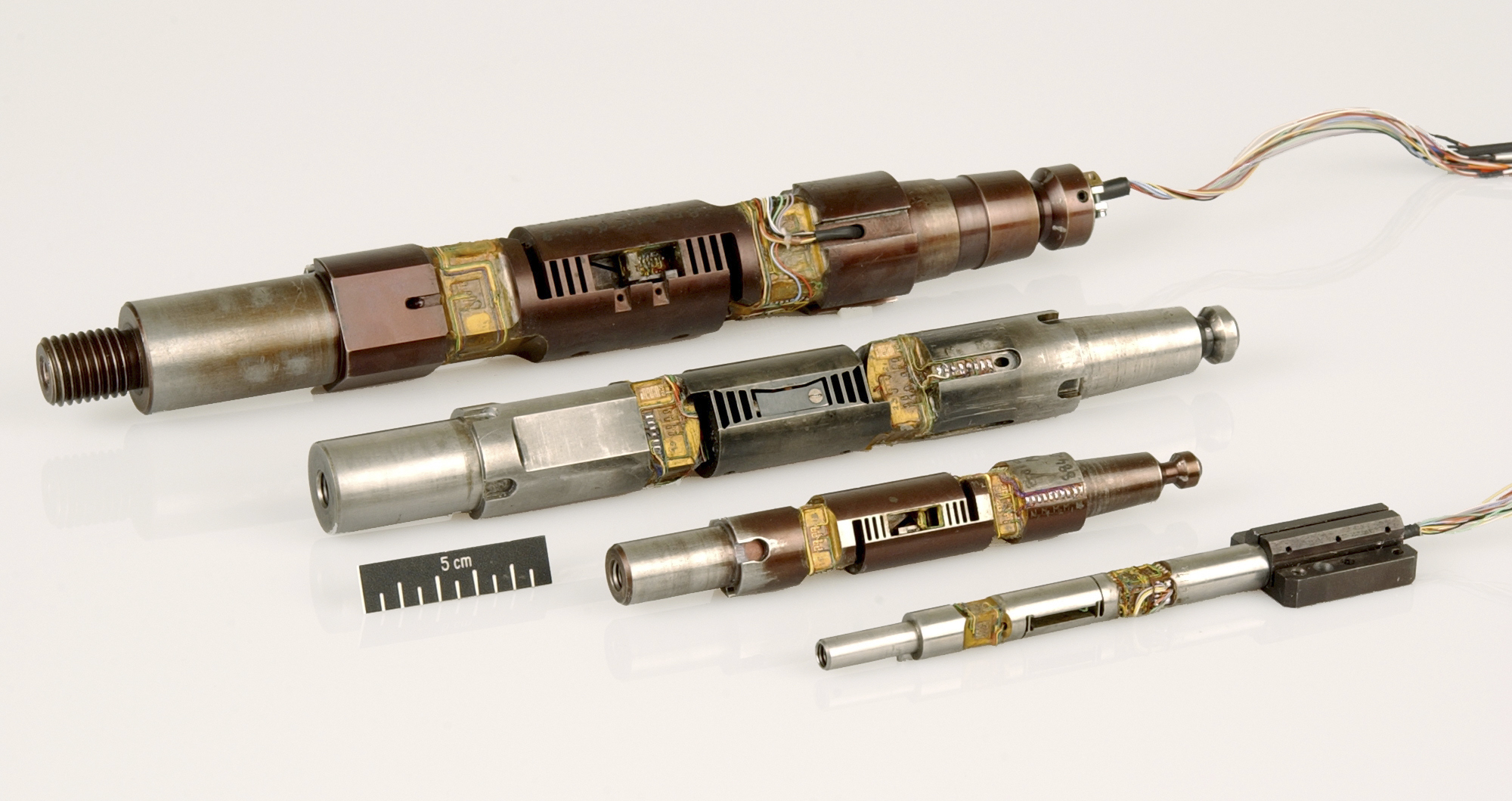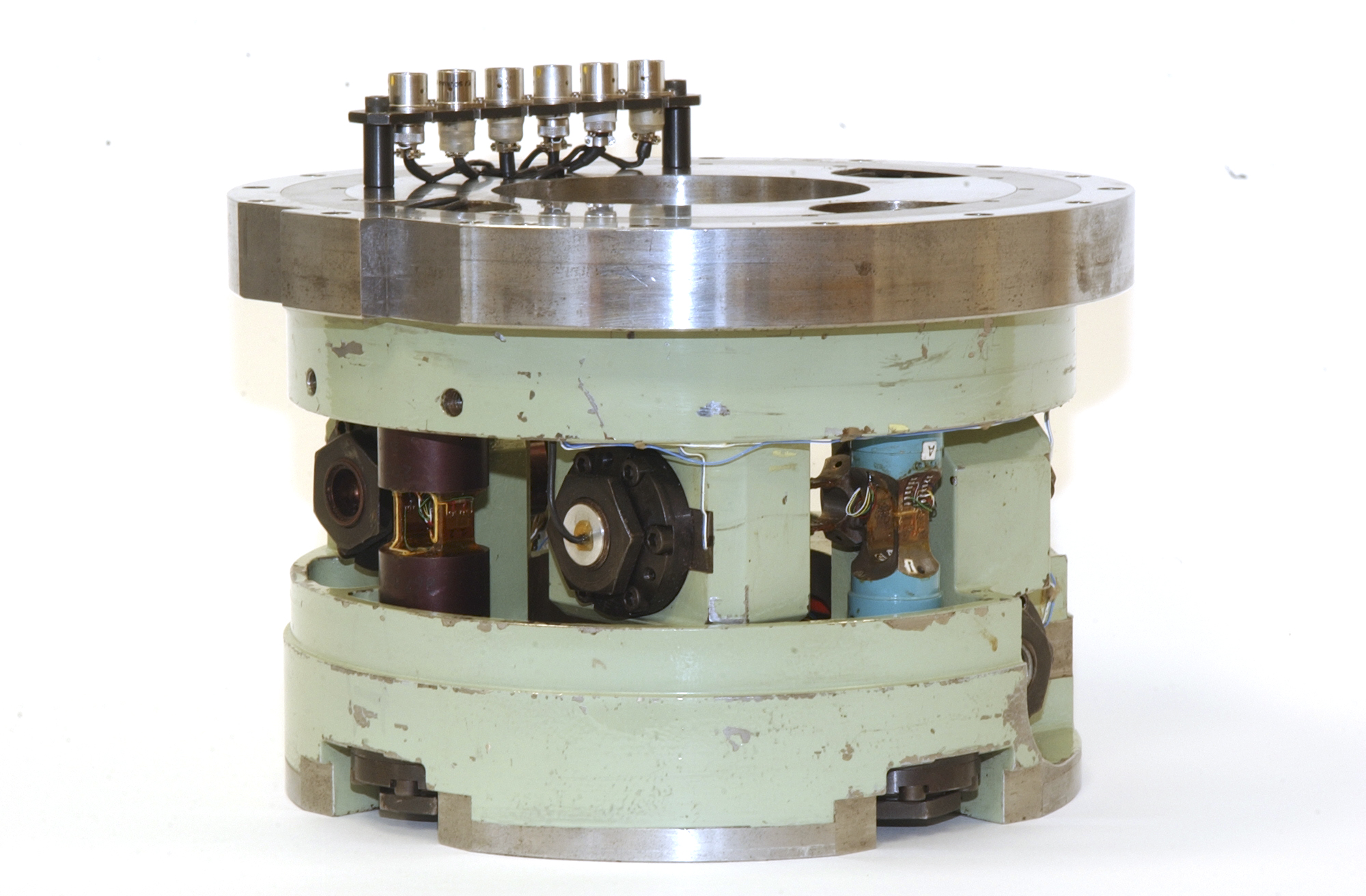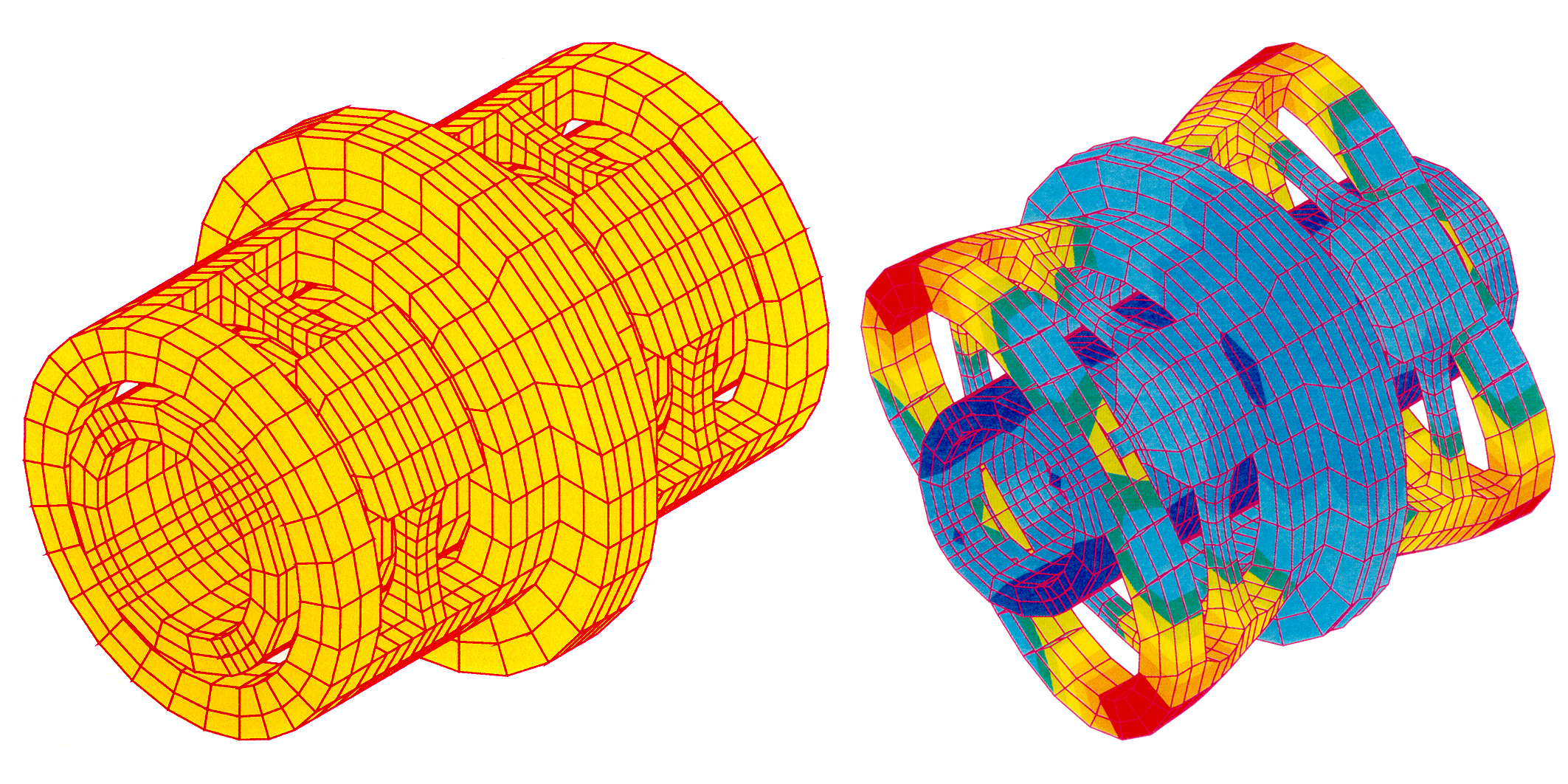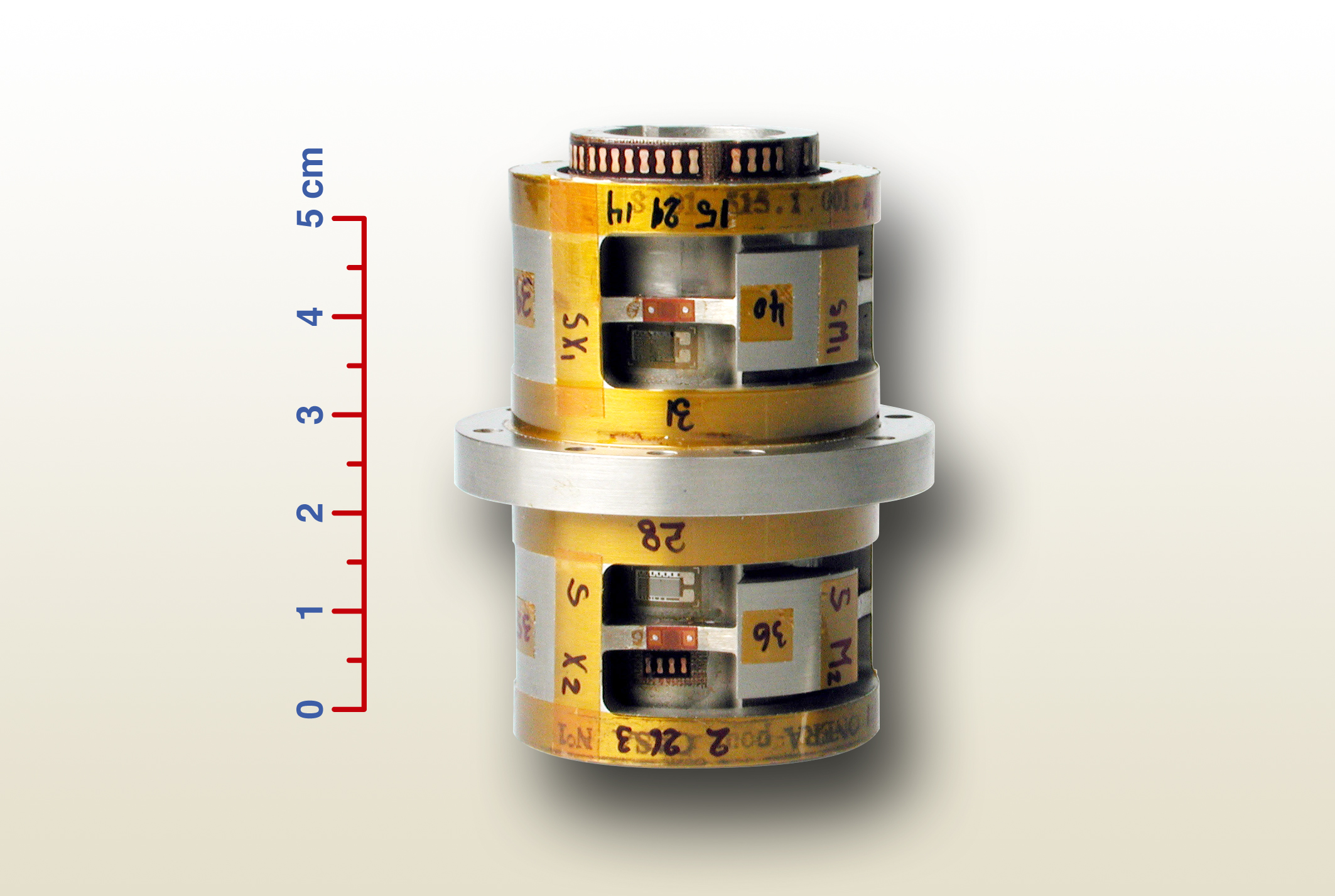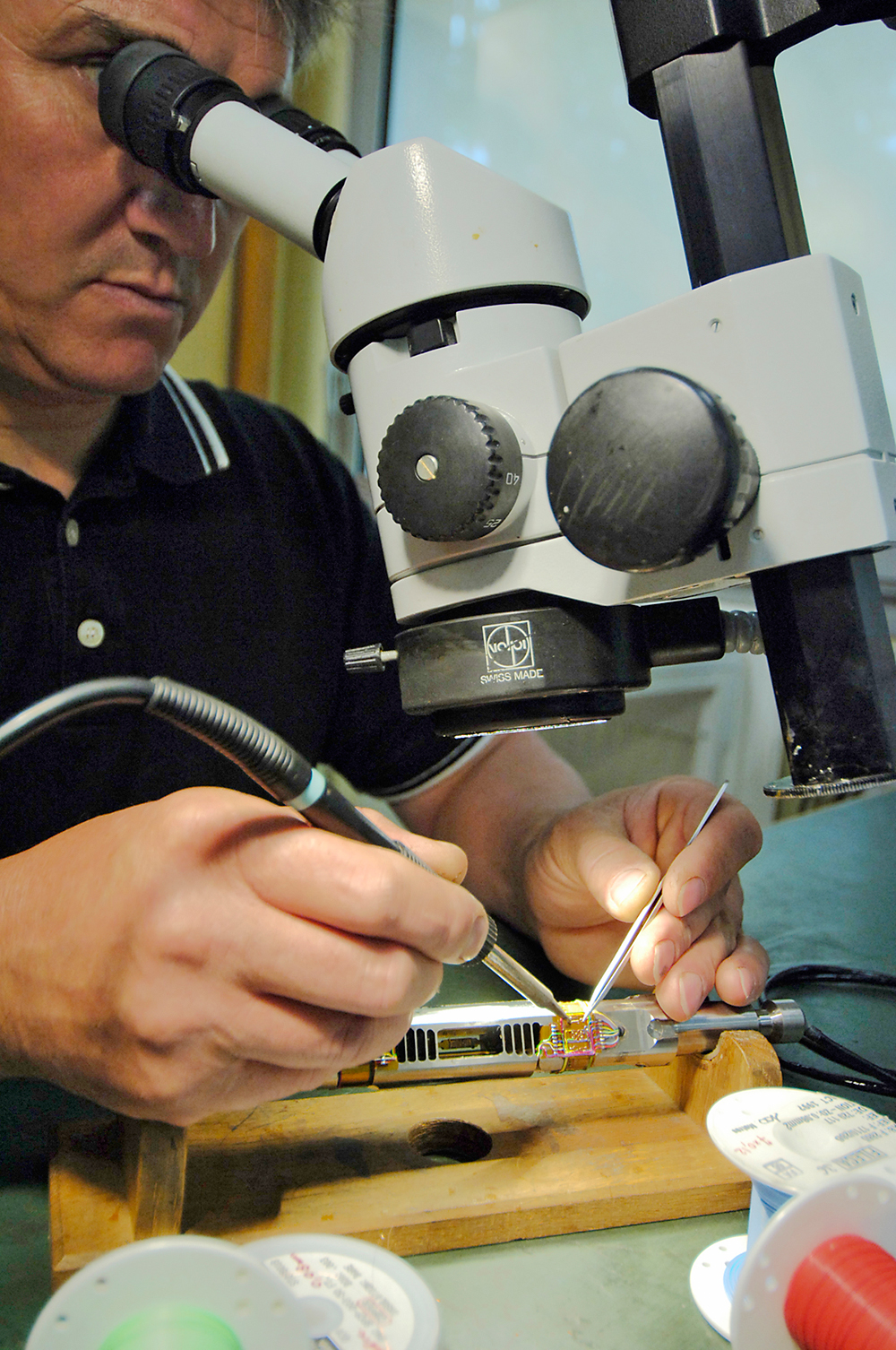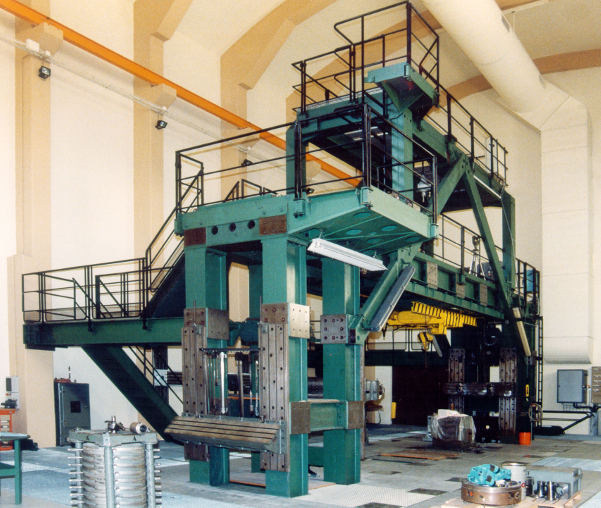ONERA Wind Tunnel Division has a large knowledge concerning the balance and dynamometers design. They are defined using design software (CATIA) and finite element software (SAMCEF). The design can be optimized according to the customer's specified parameters (loading capacity, dimensions, interfaces, and user environment). The mechanical and electrical characteristics, sensitivities can be reliably predicted.
Sting balances
Sting balances in a range from 8 to 210 mm in diameter, are used to measure the six components of the load applied (3 forces and 3 moments). ONERA has more than 75 balances of this type to call upon.
The normal force capacities range from 60 to 220,000 N, and the axial capacities from 100 to 27,000 N. Generally, the central portion of each balance has two drag flexures of the push-pull type, to minimize the thermal effects between two sets of specially design decoupling blades. They are manufactured using the Electro Discharge Machining Technique (EDM) as one single unit.
For specific applications, such as propulsion systems simulation in wind tunnel models, the air supply pipes and wiring must pass through the balance with negligible interaction. This is achieved by use of internal or external decoupling devices.
Assembled balances
Assembled balances are mainly used for half-model testing (wall or floor balances), for rotor and propeller testing and also for the rear end balances. The wall/floor balance is often equipped with decoupling devices so that high pressure air piping can pass through it without effect on the measurements.
For rotor and propeller testing a drive shaft must pass through the balance again without affecting the balance results.
The structure of these balances is rigid, and the forces are measured by six different dynamometers which are very well decoupled.
ONERA has more than 10 balances of this type available in the range of diameters from 200 mm to 2,000 mm. The normal force capacity range from 8,000 to 100,000 N and the axial capacity from 350 to 25,000 N.
Dynamometers
- For assembled balances and for special uses, one component dynamometers are often used.
- For calibration reference, Onera has developed a 50 kN and a 300 kN dynamometer, which are used by the National Certification Authority. An accuracy of better than 1.10-4 of the local capacity is achieved.
Rotating Shaft Balance (RSB)
Rotating shaft balances are generally used to measure the loads applied to a propeller, in six components. The balance's finite element modelisation is optimized to obtain the best compromise between rigidity and sensitivity, to reduce thermo mechanical and centrifugal effects. These effects are evaluated in the calibration lab before a test, mainly centrifugal effects on a rotating device.
Onera has made rotating shaft balances in a range of diameters from 51 to 200 mm, with maximum speeds up to 15,000 RPM possible. The axial capacities determine the balance sizing, and are in a range from 1,200 N to 13,000 N.
Gauging and calibration activity
There is a special laboratory at ONERA's Modane Test Centre in charge of balance gauging and thermal compensation. Many types of gauges are used for very rigid structures like six components balances.
This laboratory also instruments other mechanical parts like jack fittings, wing roots, flight control surfaces, inclinometers, and so forth.
Thermal effects are carefully avoided by:
- specially designing the balance to avoid thermal expansion effects.
- gauging techniques to avoid zero and sensitivity shifts.
For the European Transonic Wind Tunnel (ETW), ONERA Wind Tunnel Division has developed high precision balances that minimize thermal effects in the 100-300 K temperature range.



